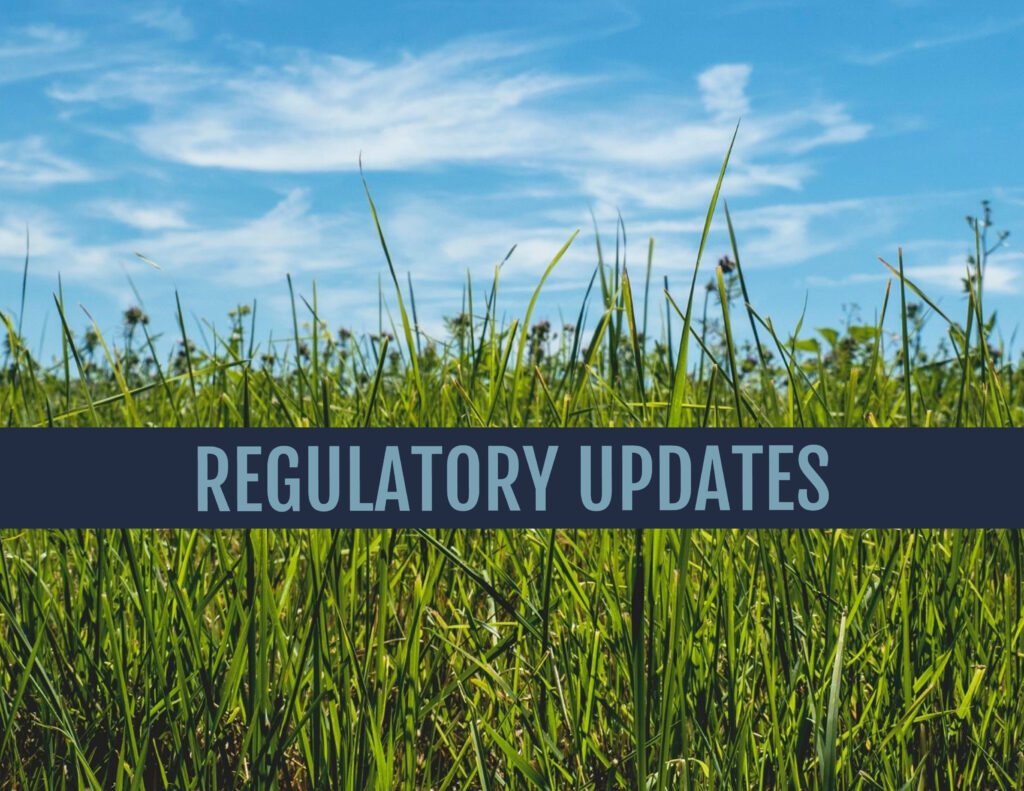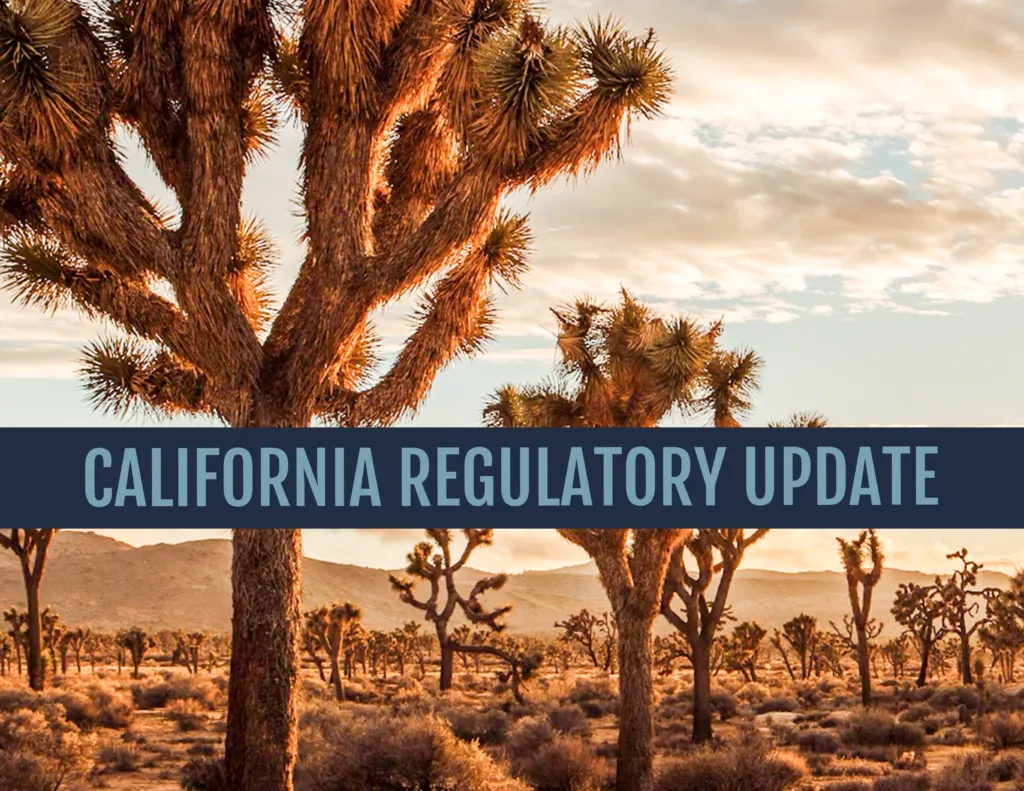
Several federal regulatory developments from the United States (U.S.) Fish and Wildlife Service (USFWS), U.S. Environmental Protection Agency (EPA), Department of the Army, and National Marine Fisheries Service (NMFS) occurred during the second quarter of 2021, including one proposed rule and two announcements regarding revising, rescinding, or reinstating regulations. In addition, the California State Water Resources Control Board (State Water Board) is in the process of updating the 303(d) list for 2020 to 2022. Summaries of each of these developments with links containing additional information and details are provided in the following subsections.
PROPOSED RULES
Regulations Governing Take of Migratory Birds
As discussed previously in our Q1 Update, the USFWS published a final rule on January 7, 2021 interpreting the Migratory Bird Treaty Act’s (MBTA’s) prohibitions (e.g., pursuing, hunting, capturing, killing) to only apply to actions directed at migratory birds, their nests, or their eggs, as opposed to actions that incidentally result in the prohibitions. On May 7, 2021, the USFWS published a proposed rule to revoke the January 7 rule, which would cause implementation of the MBTA to revert to prohibiting incidental take and applying enforcement with discretion. The USFWS determined that the January 7 rule “does not reflect the best reading of the MBTA’s text, purpose, and history” and is inconsistent with relevant court decisions. The comment period for the proposed rule ended on June 7, 2021.
More information is available here:
https://www.fws.gov/regulations/mbta/process
https://www.govinfo.gov/content/pkg/FR-2021-05-07/pdf/2021-09700.pdf
INTENT TO REVISE, RESCIND, OR REINSTATE REGULATIONS
Revised Definition of Waters of the United States
On January 20, 2021, President Biden issued Executive Order 13990, which directed federal agencies to review regulations and other actions (e.g., orders or policies) that were issued or adopted during the Trump Administration. As a result, the EPA and Department of the Army reviewed the 2020 Navigable Waters Protection Rule and announced their intention on June 9, 2021 to initiate a new rulemaking process to revise the definition of “waters of the U.S.” The EPA and Department of the Army determined that the rule is leading to significant environmental degradation, in part due to the approximately 25 percent reduction of waters that are afforded protection under the rule.
In coordination with the EPA and the Department of the Army, the Department of Justice filed a motion on June 9, 2021 to remand the 2020 Navigable Waters Protection Rule back to the agencies. However, the rule still remains in effect as of the timing of this post.
Virtual public meetings that will allow interested stakeholders to provide verbal recommendations are scheduled for August and tentatively for September.
Further details regarding the schedule, registration, and format of the public meetings, as well as how to provide written recommendations, are located here: https://www.epa.gov/wotus/public-outreach-and-stakeholder-engagement-activities.
Information on current guidance and regulations related to waters of the U.S. is available here: https://www.epa.gov/wotus
Revise, Rescind, and Reinstate Endangered Species Act Regulations
Consistent with Executive Order 13990 described in the previous section, the USFWS and NMFS announced their plan to revise, rescind, or reinstate five Endangered Species Act (ESA) regulations that were finalized during the Trump Administration. The intent of these changes is to “improve and strengthen implementation of the ESA” and address current conservation challenges, such as climate change.
The proposed changes include:
- Rescinding regulations that determine how the USFWS conducts critical habitat exclusion analyses under Section 4(b)(2) of the ESA (85 Federal Register [FR] 82376)
- The USFWS proposes to revert to implementation of the joint USFWS/NMFS regulations at 50 Code of Federal Regulations (CFR) 424.19 and 2016 policy on 4(b)(2) exclusions.
- Rescinding the regulatory definition of habitat for the purposes of critical habitat designation (85 FR 81411)
- Revising regulations for listing species and designating critical habitat (84 FR 45020)
- The USFWS and NMFS propose to make several revisions, including reinstating language affirming that listing determinations are made “without reference to possible economic or other impacts of such determination.”
- Revising regulations for Section 7 consultation (84 FR 44976)
- The USFWS and NMFS propose to make several revisions, including revising the definition of “effects of the action” and associated provisions.
- Reinstating the “blanket 4(d) rule” (50 CFR Part 17)
- The blanket 4(d) rule automatically extends protections to species listed as threatened under the ESA, unless the USFWS adopts a species-specific 4(d) rule.
Further details, such as information regarding future public participation, will be conveyed in forthcoming actions from the agencies.
Information on current implementation of the ESA is available here:
https://www.fws.gov/endangered/improving_esa/index.html
303(D) LIST UPDATES
Pursuant to Clean Water Act Sections 303(d) and 305(b), the State Water Board is required to report to the EPA regarding overall water quality in the state, including submitting a list identifying water bodies that do not meet water quality standards (i.e., the 303[d] list). For the 2020 to 2022 reporting cycle, the Central Coast, Central Valley, and San Diego Water Board regions, as well as several waterbodies in the Colorado River Basin region, were assessed, resulting in recommendations for 1,240 new listings and 223 new delistings of impaired waterbodies for the 303(d) list. The Draft Staff Report for the 2020-2022 Integrated Report was released on June 4, 2021, and includes a complete recommended 303(d) list in Appendix A. The comment period for the draft report and 303(d) list ended on July 16, 2021, and the release of the Revised Staff Report and responses to public comments is expected in December 2021.
The Draft Staff Report, as well as additional information, can be found here: https://www.waterboards.ca.gov/water_issues/programs/water_quality_assessment/2020_2022_integrated_report.html.


